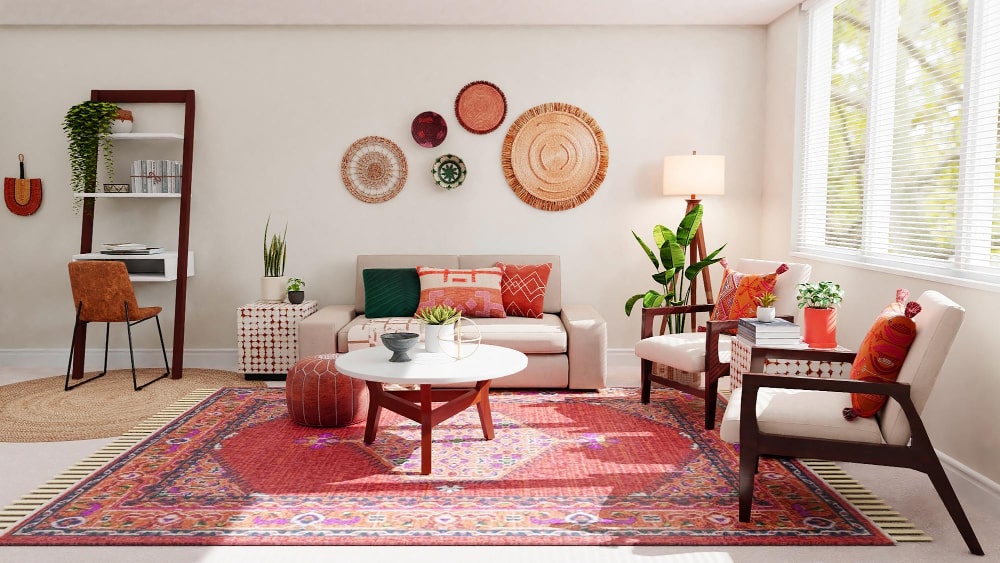Hire an expert Architecture Firm for residential and commercial projects.
Hire an expert Architecture Firm for residential and commercial projects.
Blog Article
Change Your Home With Essential Concepts of Inside Layout and Appearances
The art of transforming your home via the essential concepts of indoor layout and looks requires a thoughtful technique that integrates shade, equilibrium, and spatial recognition. By recognizing the influence of color theory and the relevance of appearance and patterns, one can create spaces that are not only visually enticing however additionally deeply personal. Attaining this stability involves greater than mere decoration; it includes a critical plan and an eager understanding of exactly how each element interacts within a space. As we discover these fundamental ideas, consider just how they may redefine your understanding of home and personal expression.
Understanding Shade Theory
Recognizing the concepts of color concept allows designers to create spaces that reverberate emotionally with occupants while satisfying practical requirements. Each classification plays a crucial duty in developing harmony within a space.
The mental impact of shades is extensive; cozy tones such as reds and oranges stimulate power and warmth, while awesome tones like blues and greens advertise calmness and tranquility. The usage of corresponding colors enhances aesthetic passion, developing striking contrasts that can elevate an area's allure.
Neutral shades, on the other hand, function as a functional background, permitting various other style components to shine. It is important to take into consideration factors such as illumination and the space's purpose when selecting a shade scheme, as these can alter the understanding of colors throughout the day.
Eventually, a well-considered color pattern can change an area, fostering a feeling of convenience and design that lines up with the residents' preferences. Mastery of shade concept is, consequently, an essential ability for any type of interior designer intending to produce unified and welcoming environments.
Achieving Equilibrium in Design
How can designers accomplish a sense of stability in their areas? Attaining balance in layout is fundamental to creating unified interiors.
Unbalanced balance, on the other hand, counts on differing elements that still achieve a natural appearance. This method enables even more dynamic and informal arrangements, giving rate of interest while keeping equilibrium. By carefully picking differing dimensions, shades, and appearances, developers can create a visually engaging space that feels balanced yet energetic.
Radial equilibrium emphasizes a main centerpiece with elements radiating exterior. This style is typically seen in round formats, where furnishings and decoration create a natural border that attracts the eye internal.
Ultimately, attaining equilibrium calls for thoughtful consideration of scale, proportion, and the partnerships in between elements. interior design firms. By masterfully using these balance principles, developers can change rooms right into settings that really feel both cosmetically pleasing and functionally harmonious, enhancing the total experience for owners
Importance of Spatial Recognition

A keen feeling of spatial understanding allows designers to recognize centerpieces within a space, assisting the viewer's interest to key features while preserving an overall sense of unity. It likewise aids in the critical positioning of illumination, which can drastically influence the understanding of space and state of mind. In addition, comprehending spatial relationships allows the developer to provide to the details needs of inhabitants, ensuring that each location serves its desired objective without jeopardizing aesthetics.
Inevitably, spatial recognition is essential for making best use of the potential of any indoor room. By carefully taking into consideration the interaction in between measurements, layout, and function, designers can create environments that not only satisfy functional demands yet also stimulate a news feeling of comfort and appeal, enhancing the overall living experience.
Integrating Appearance and Patterns
Welcoming a diverse variety of structures and patterns can dramatically enhance the visual and tactile appeal of an interior area. The strategic use of different materials-- such as timber, steel, material, and stone-- produces depth and rate of interest, making a space feel much more welcoming find out here and vibrant. As an example, integrating smooth surfaces with rough appearances can establish an equilibrium that draws the eye and involves the senses.
When incorporating patterns, take into consideration both scale and rep. Large patterns can work as centerpieces, while smaller, refined designs can match other aspects without overwhelming the room. Layering patterns, such as pairing floral pillows with striped throws, adds intricacy and a feeling of harmony if executed thoughtfully.
It is additionally crucial to keep a natural color combination, making certain that structures and patterns collaborate instead than complete for interest. By picking a few essential appearances and patterns, you can develop a linked visual that mirrors your personal design while enhancing the total setting of the space. Eventually, the cautious consolidation of these components can transform a mundane room into a sophisticated setting abundant with personality and warmth.
Customizing Your Room
Developing a room that shows your character is vital to accomplishing a really inviting setting. Customization in interior decoration permits you to infuse your special design and interests right into your home, changing it from a plain sanctuary right into a refuge that talks to who you are. Begin by choosing a color palette that resonates with your feelings-- vibrant shades can invigorate, while soft tones provide serenity.
Integrate art work and decoration that reflect your enthusiasms, whether look here it be travel, nature, or abstract ideas. Showing personal collections, such as books, pictures, or souvenirs, can stimulate treasured memories and create focal points within a room. In addition, think about customizing functional pieces, like upholstered furniture, to align with your visual preferences.

Conclusion
To conclude, the transformation of a home via the essential principles of interior decoration and aesthetics necessitates a comprehensive understanding of shade theory, balance, spatial understanding, appearance, and customization. Each element contributes considerably to producing a harmonious and practical living environment - Architecture Firm. By attentively incorporating these principles, individuals can boost the aesthetic charm and psychological vibration of their rooms, ultimately cultivating a home that reflects unique identifications while providing convenience and practicality
Report this page